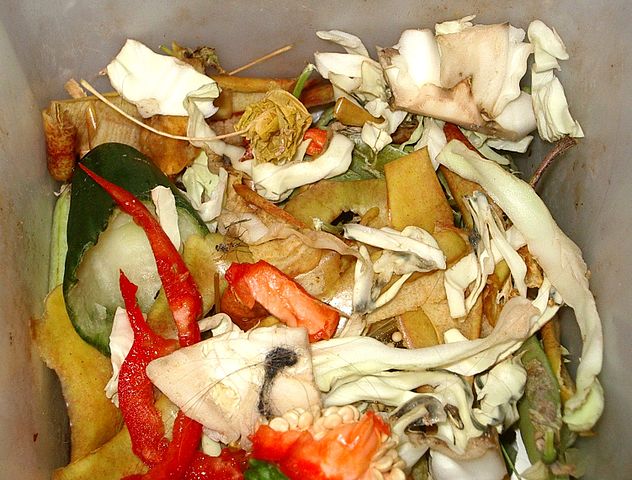Few of us ever wonder what happens to the leftover food on our plate when we dine in restaurants or what happens to food that doesn’t get served.
The most common thought would be that these are simply thrown away. You would be surprised at the shelf life of these foods as they go through a journey one might not expect or even think about. Crumbs from your favorite focaccia at that Italian restaurant or leftover scraps of meat from that hamburger you enjoyed from a popular take-out place could end up as a meal for the impoverished.
Living on less than what they need has forced some people to eat what other people have thrown away. This is the reality.
The Ugly Side of Manila
One might say that to live in the slums is no different than to survive in the desert. Perhaps one draws the veil between how food is hunted; in the slums of Manila one survives by thriving on the mountains of garbage, hunting for scraps and spoils wherever they can find.
Members of the urban poor who trade in this survival technique have learned to claw and dig their way through mounds of filth, and how to develop a palate to appreciate what they find. To a starving, desperate family with few means to survive but to enterprise a scavenger’s trades, each spoonful is food to feed the belly.
Pagpag is the local term for these leftovers found in the mounds of garbage and disposal sites in the Philippines. It is a quintessential staple for the poorest of the poor and is not only a means to nourish and sustain but has become trade and livelihood for those who dare capitalize on it.
In the most desolate of slums in Metro Manila, pagpag is considered a necessity, even a commodity.The state of these leftovers is of no consideration. They could be found near spoilage and those who are lucky enough will simply wash them and think of creative ways to sell or feast on them.
Some people have developed a way of re-packaging pagpag as a more palatable choice. They are fried or boiled and some attempt gourmet creativity by putting together similar pagpag and packing them as a whole meal.
However it is prepared and presented, there are many from the slums who have made their living collecting pagpag from the mountains of trash, where a good heap can sell for about twenty pesos (about half a dollar).
Pagpag for Survival
If you think about the trade and consumption of pagpag, you wouldn’t think anyone from the more affluent and well-off circle of uptown Manila would know about it.
But Manila is such a diverse culture. The vice mayor of Manila, former TV star Isko Moreno, is a perfect example of the wheel of fate rolls in this country of extremes. Growing up destitute, he recalls trading in pagpag as a daily meal for himself and his siblings. It is not something he is ashamed of, he says, and often retells the story to inspire Manila’s youth to strive and keep clawing their way out of the muck that they may be in right now.
In the hierarchy of needs among the urban poor of Metro Manila, pagpag is at the top of the pyramid-providing sustenance to the growing population of have-nots and allowing those who have the stomach to take on pagpag as an entrepreneurial idea a means to survive another day.
Children from Manila, like thousands of others all over the metropolis, take advantage of pagpag as a means to earn a coin. You will find them at the reclamation site awaiting the garbage trucks, trucks that deliver discarded food from the day before.
Normally, these garbage food trucks pull up at seven in the morning and everyone looking to capitalize on pagpag will gather.
As soon as the driver signals them, women and children will sift through the unloaded garbage and hunt for food items. Some days are worse than others; where they are only able to gather a few plastic bags, but when the food trucks deliver leftover from the fast food restaurants, the scavengers hit paydirt and earn enough to buy fresh food for themselves.
No Action from the Government
City officials are aware of the practice of collecting and selling pagpag. But so far, no action has been taken to help the people who engage in this unsanitary and often dangerous practice.
The people who eat scraps technically play Russian roulette with their health every day – but it’s either pagpag or beg for food on the streets.
For others, the quest for Pagpag takes them far from the mounds of garbage and trucks that drop off scraps, but to take on more proactive means to seek out these “food treasures” even before they reach the dumps. Children who are pagpag seekers are often seen hiding near rubbish bins, taking company with stray cats and sewer rats to wait for and search through trash bags that restaurants place in their bins.
In this age, it’s hard to contemplate how people can bring themselves to eat food that’s been discarded by others. It can be inferred that the practice is in itself inhuman and quite savage. There isn’t a stone left unturned, anything edible is considered a decent course.
It may be hard for someone who didn’t grow up in this situation to understand why vagabonds and scavengers resort to this way of life but is the reality of living for many of the poorest and the destitute of Metro Manila.
To people like the scavengers of the metro’s trash, finding an unsullied piece of Chicken Joy from Jollibee or a half-eaten McDonald’s burger can mean everything, a sign that there is another day to battle and yet one more to be thankful for. Tonight they survive, they eat.
—
Photo: Muu-karhu




